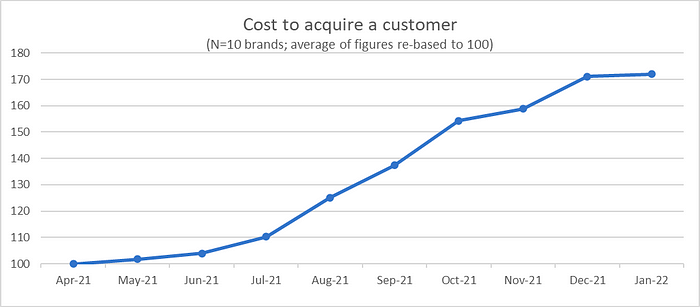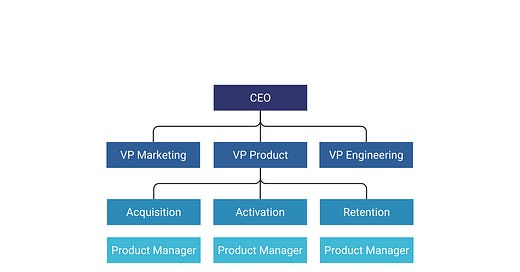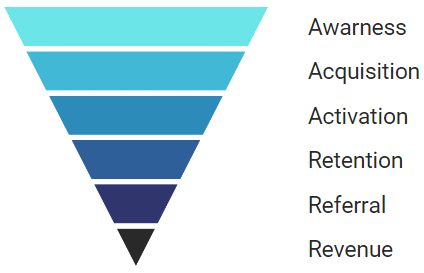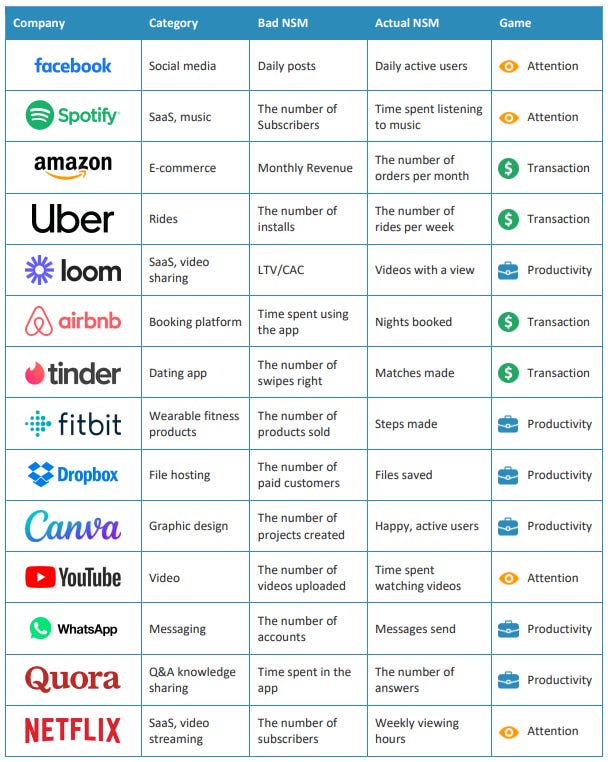Hey, Paweł here. Welcome to the archived free edition of The Product Compass!
Every week, I share actionable tips to help you learn and grow as a PM.
Here’s what you might have recently missed:
Premium: User Journey Mapping 101
Premium: OKRs 101 + Advanced Techniques
Premium: A/B Testing 101
Premium: The Product Frameworks Compendium
Premium: The Ultimate List of Product Metrics
If you haven't upgraded your account yet, now's the time for the full experience:
Product-Led Growth 101, Part 1/2
In today’s edition, we delve deep into the Product-Led Growth and growth tactics:
What is Product Growth?
Why Product-Led Growth?
How to Start?
How to Acquire Customers?
How to Activate Customers?
Next week, we will be covering:
How to Retain Customers?
How to Monetize Your Product?
Going Viral
B2B SaaS Growth Blueprint From 0 to $100M ARR
Note: Product-Led Growth or just Product Growth?
Many of the methods I describe in this series are universal.
I emphasize what's related to PLG, as those are good practices, especially relevant in today's business environment. At the same time, when possible, I write more broadly about growth.
Every product is different. The goal is product growth driven by creating real customer value and eliminating friction, not checking all the PLG checkboxes.
1. What is Product Growth?
Let’s clear up a common misconception first: Product Growth isn’t just about marketing.
Product Growth involves acquiring new customers, retaining existing customers, maximizing customers’ value, and optimizing the product experience:
Growth teams navigate through the entire A+AARRR funnel. They are involved in product development and ensure that the product meets user needs, stays relevant in the market, generates revenue, and maintains a competitive advantage.
2. Why Product-Led Growth?
Product-Led Growth (PLG) is a go-to-market strategy that relies on your product to acquire, activate, retain, and expand the customer base
Why does it matter?
2.1 Three tidal waves
In his book Product-Led Growth, Wes Bush described three tidal waves impacting the business landscape:
Tidal Wave 1: Startups are more expensive to grow
Between 2013 and 2019, the cost of customer acquisition surged by over 60% for both B2B and B2C companies:

Another study in 2022 showed this trend is speeding up:

Tidal Wave 2: Buyers now prefer to self-educate
Before buying, users prefer to try and easily experience the product's value without going through the long learning process.
Tidal Wave 3: Product experience has become an essential part of the buying process
People want to see what a product can do and how it can help them without talking to sales. They expect the product to take care of the whole onboarding process.
2.2 Product-Led Growth Examples
Here are several examples of companies that have successfully implemented Product-Led Growth:
Slack: Used by our community, Slack offers a freemium model, intuitive user interface, and easy onboarding. Importantly, Slack encourages users to invite colleagues. It has experienced exponential viral growth, with 32+ million of daily active users (2023).
Grammarly: The product's ability to deliver immediate value has led to widespread user adoption and organic growth. Grammarly has over 30 million daily active users and has become a leading writing assistant tool. As a non-native speaker, I can’t imagine writing without it.
Notion: Offers a freemium model, highly customizable all-in-one collaboration platform, and user-friendly interface. In 2022, it surpassed 20 million monthly active users, and in 2023, it has already exceeded 30 million.
What all those products have in common:
They are easy to try and understand.
They offer a real, superior customer value.
Users can immediately experience the value those products offer.
Using a product becomes a habit.
Active users become their best advocates.
3. How to Start?
3.1 Product-Market Fit
Before investing heavily in growth initiatives (e.g., paid ads, experimenting with pricing) ensure you can retain your customers. Otherwise, it's like pouring water into a leaky bucket.
Here comes a definition of the Product-Market Fit from The Lean Product Playbook by Dan Olsen:
“My definition of product-market fit (…) is that you have built a product that creates significant customer value. This means that your product meets real customer needs and does so in a way that is better than the alternatives” - Dan Olsen
In Hacking Growth, Sean Ellis described a simple survey that, according to his experience with companies like Dropbox, produces reliable results.
Let’s try it for The Product Compass:
How to interpret the results?
If 40% or more of respondents would be “very disappointed,” that’s a green light for moving full speed with your growth initiatives.
If 25%-40% of respondents would be “very disappointed,” you can experiment to tweak the product or its language.
If less than 25% of respondents would be “very disappointed,” your product requires significant development.
Here you can see (and answer) recommended follow-up questions: https://forms.gle/tNUNqs3eJ3rsVi8K7
You can learn more about achieving Product-Market Fit from my previous series:
3.2 Cross-functional teams
Whether or not your organization has dedicated growth teams, cross-functional collaboration and placing product at the center of all your actions is essential.
A mature organization will have dedicated growth teams, which typically consist of a Product Manager, Engineers, Designer(s), and Data Analyst(s). Most teams will also have dedicated Marketing Expert(s).
Many organizations have dedicated growth teams focused on one step of the funnel, for example:
Acquisition
Activation
Retention
A good practice is having marketing experts dedicated to specific acquisition channels like:
SEO
Paid Ads (Google, Meta, X, Instagram)
Content Marketing
Viral/word-of-mouth
In Hacking Growth, Sean Ellis described two common reporting structures:
Product-Led Reporting Model, in which:
All growth teams report to the VP of Product.
Examples: LinkedIn, X (Twitter), Dropbox.
Independent-Led Reporting Model, in which:
All growth teams report to the VP of Growth.
Examples: Facebook, Walmart.
I strongly support the first, Product-Led Reporting Model, which better fits removing organizational silos.
Regardless of the reporting structure, companies adopting a Product-Led Growth emphasize strong collaboration and placing their product at the center of their activities. Marketing uses the product as the main lead magnet, Customer Success employs it to ensure users achieve their goals within the app, Design focuses on removing friction for a seamless user experience, and B2B Sales can laverage leads qualified by Product (PQLs).
3.3. North Star Metric
What many sources forget to recognize is that The North Star Framework and Product-Led Growth are closely related.
The North Star Metric reflects how customers get value from the product, ultimately serving as a leading indicator of long-term business success.
Common examples:
In my previous post, The North Star Framework 101, I described:
What is the North Star Metric?
Common misconceptions
Recommended classification
The North Star Framework, including identifying “Input Metrics”
North Star Metric vs. One Metric That Matters (OMTM)
Practical tips and advice
3.4 Experimentation
Each growth team performs continuous product discovery and experiments in short iterations. In particular, they:
Leverage Product Analytics to understand what customers are doing across their customer journey, identify friction points, and where people drop off the funnel.
Interview customers to understand their problems and why they are doing what they are doing.
Structure knowledge about customer’s problems. Prioritize those with the highest potential to move the expected metric.
Ideate possible solutions and hidden assumptions. Prioritize those with the highest return on investment (“low-hanging fruits”).
Run experiments to prove or disprove those assumptions.
There are two types of experiments they can perform:
Standard experiments focused on value for the users, known from Continuous Product Discovery. You can learn more about them from Continuous Product Discovery Masterclass premium subscribers can take for free. Those experiments result in a validated product backlog.
Scaling experiments often involve A/B testing, multivariate testing, and other forms of experimenting on production. These are often simple changes like messaging/onboarding/pricing/small features that can be quickly developed and tested. You can learn more about A/B testing from A/B Testing 101.
Product Growth teams continuously ideate, experiment, implement ideas, measure the impact, learn from it, and improve.
3.5 Access to data
Whether it’s the North Star Metric, one of the Input Metrics, or any other metric the team is working on, make sure that:
Everyone understands the metric the same way.
The metric can be measured. For some metrics, this might require building a reporting system that collects the data from sources other than your product, like Google Ads, CRM, or transactional data.
The data is available to anyone without stage gates, requests, or approvals, e.g., in the form of an interactive dashboard.
The data can be further analyzed by additional dimensions like customer segments or cohorts.
4. How to Acquire Customers?
Keep reading with a 7-day free trial
Subscribe to The Product Compass to keep reading this post and get 7 days of free access to the full post archives.








